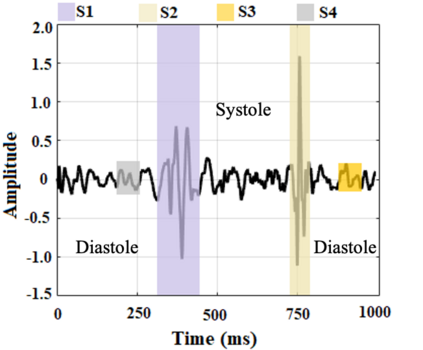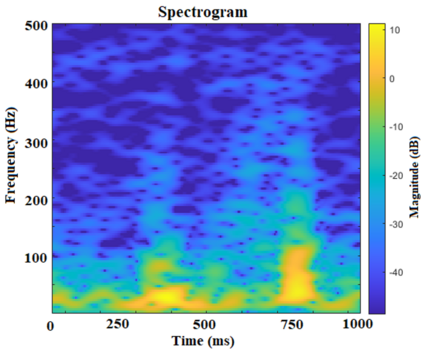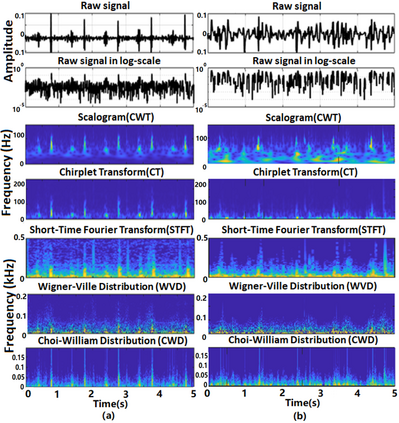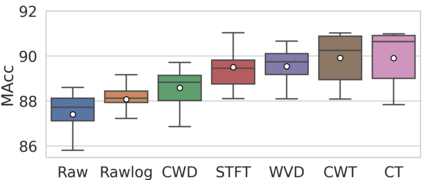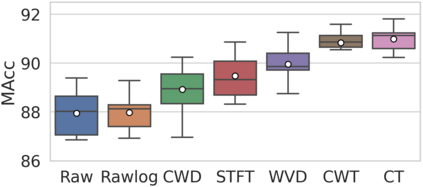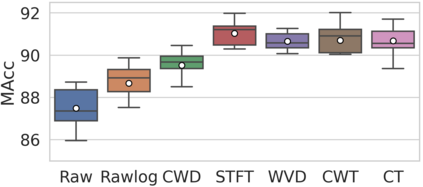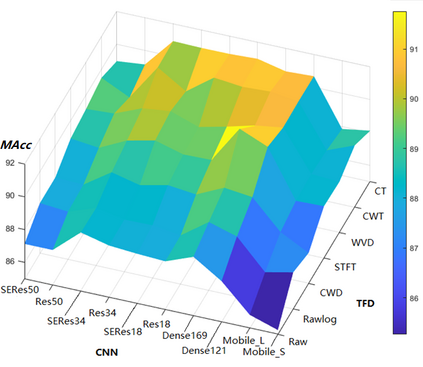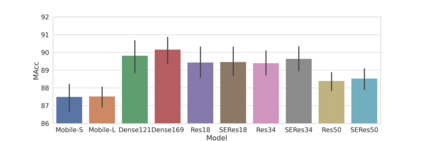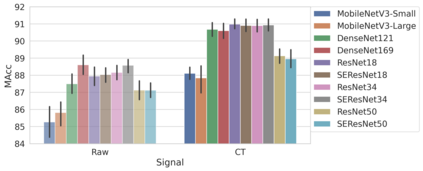Time-Frequency Distributions (TFDs) support the heart sound characterisation and classification in early cardiac screening. However, despite the frequent use of TFDs in signal analysis, no study comprehensively compared their performances on deep learning for automatic diagnosis. Furthermore, the combination of signal processing methods as inputs for Convolutional Neural Networks (CNNs) has been proved as a practical approach to increasing signal classification performance. Therefore, this study aimed to investigate the optimal use of TFD/ combined TFDs as input for CNNs. The presented results revealed that: 1) The transformation of the heart sound signal into the TF domain achieves higher classification performance than using of raw signals. Among the TFDs, the difference in the performance was slight for all the CNN models (within $1.3\%$ in average accuracy). However, Continuous wavelet transform (CWT) and Chirplet transform (CT) outperformed the rest. 2) The appropriate increase of the CNN capacity and architecture optimisation can improve the performance, while the network architecture should not be overly complicated. Based on the ResNet or SEResNet family results, the increase in the number of parameters and the depth of the structure do not improve the performance apparently. 3) Combining TFDs as CNN inputs did not significantly improve the classification results. The findings of this study provided the knowledge for selecting TFDs as CNN input and designing CNN architecture for heart sound classification.
翻译:尽管在信号分析中经常使用TDD,但是没有进行全面的研究,比较其在为自动诊断而深层学习方面的表现;此外,将信号处理方法作为进化神经网络(CNNs)的投入,已证明是提高信号分类性能的一种实用方法;因此,这项研究旨在调查如何最佳地使用TDD/合并TDDs作为CNN的输入。 所介绍的结果显示:(1) 将心脏声音信号转换到TFD域的分类性能高于原始信号的使用。 在TDDs中,所有CNN模型的性能差异不大(平均精确度在1.3美元以下)。 然而,持续波列变(CWT)和Chirplet变(CT)超过其余部分。(2) 适当增加CNN能力和结构的优化可以改善性能,而网络结构不应过于复杂。基于ResNet或SEResNet的系统域域网,其分类性能优于原始信号的使用性能。在所有CNNCM模型模型的性能差异很小(平均精确度在1.3美元以内),但是,不断变换(CWT) 和CRFD的精度结构的精度的精度分析结果并没有改进。


